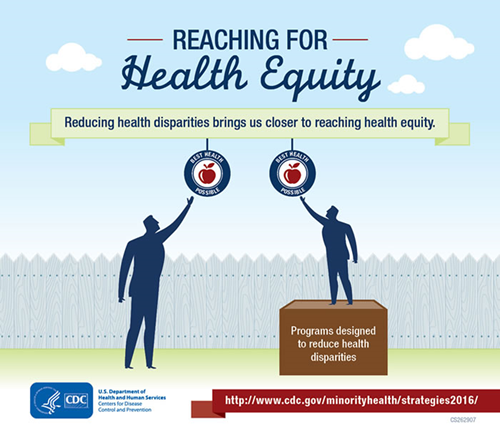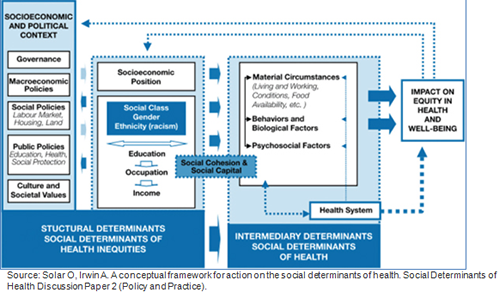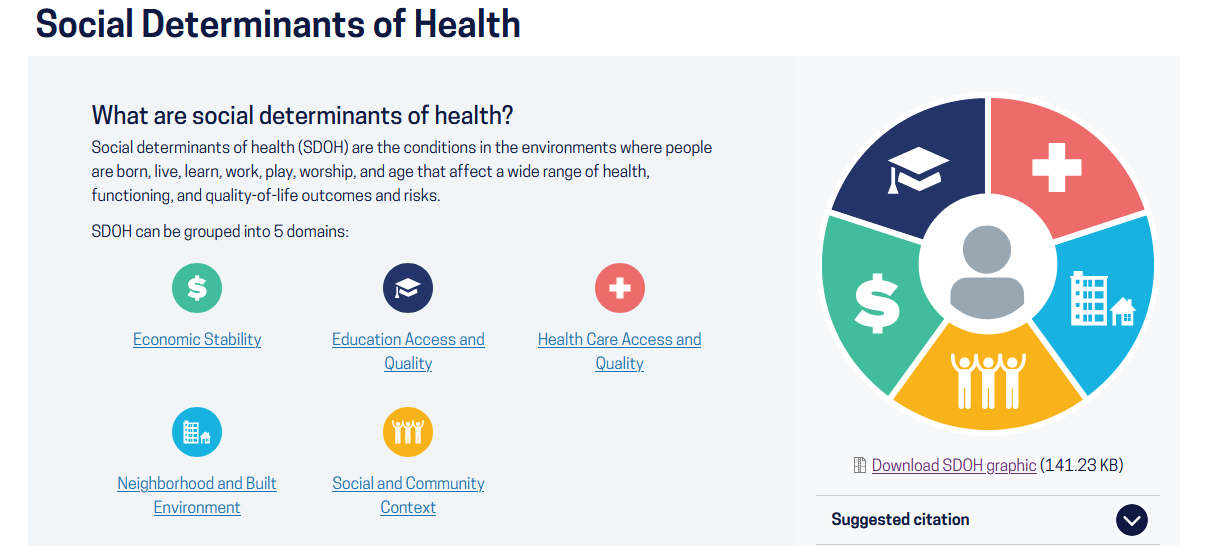Online Course
NRSG 780 - Health Promotion and Population Health
Module 5: Health Disparities / Cultural Competence
Health Disparities Definitions
Definitions
Health Equity is when everyone has the opportunity to be as healthy as possible. (CDC, 2016)
Health disparities are differences in health outcomes and their determinants between segments of the population as defined by social, demographic, environmental and geographic attributes. (CDC, 2011)
Health disparities are often referred to as gaps in health between segments of the population. Often they are between groups that reflect social inequities. The CDC has been monitoring and responding to these challenges since 1946.
Health inequalities is a term used more in the scientific and economic literature to refer to summary measures of population health associated with individual- or group-specific attributes (e.g., income, education or race/ethnicity). (CDC, 2011)
Health inequities are a subset of health inequalities that are modifiable, associated with social disadvantages, and considered ethically unfair.
Often the terms health disparities and health inequalities are used interchangeably. It is important to know the context of the discussion to distinguish their meaning.

Source: http://www.cdc.gov/minorityhealth/strategies2016/index.html
Framework for Action on Social Determinants of Health
In 2007 Solar and Irwin developed a conceptual framework for action on the social determinants of health. The framework was updated in 2010. This framework was created to help policy-makers develop interventions to counter health inequities. The model includes three core components:
- socioeconomic and political context
- structural determinants of health inequities
- intermediary determinants of health
The structural determinants cause and operate through intermediate determinants to shape health outcomes.


Healthy People 2030 emphasizes that the social determinants of health (SDOH) have a major inpact on people’s health, well-being, and quality of life. SDOH include:
- Safe housing, transportation, and neighborhoods
- Racism, discrimination, and violence
- Education, job opportunities, and income
- Access to nutritious foods and physical activity opportunities
- Polluted air and water
- Language and literacy skills

Source: https://health.gov/healthypeople/objectives-and-data/social-determinants-health
To learn more about the SDOH please review the required reading Healthy People 2030 Social Determinants of Health available at https://health.gov/healthypeople/objectives-and-data/social-determinants-health
The risk for mortality, morbidity, unhealthy behaviors, reduced access to health care and poor quality of care increases with decreasing social circumstances. The association is continuous and graded across a population and cumulative over the life course. This is an example of health disparity that is also a health inequity. (Beckles & Truman, 2013)
![]()
This website is maintained by the University of Maryland School of Nursing (UMSON) Office of Learning Technologies. The UMSON logo and all other contents of this website are the sole property of UMSON and may not be used for any purpose without prior written consent. Links to other websites do not constitute or imply an endorsement of those sites, their content, or their products and services. Please send comments, corrections, and link improvements to nrsonline@umaryland.edu.